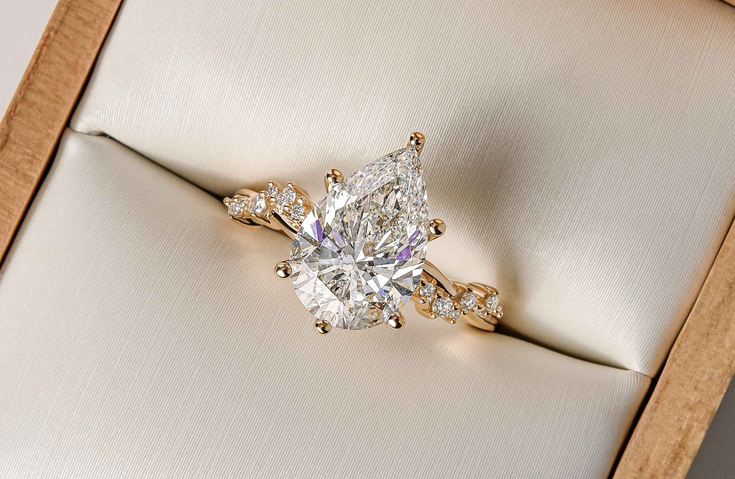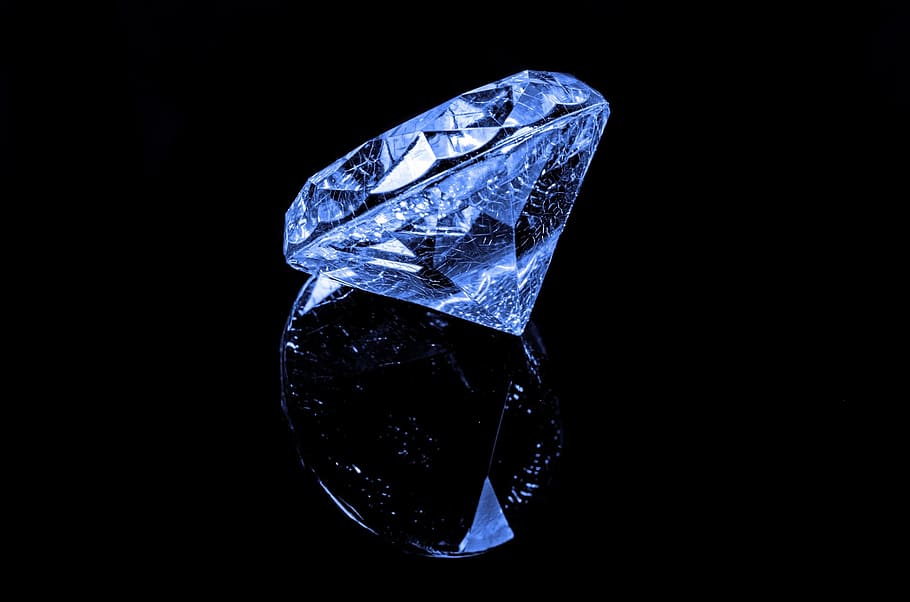From dazzling round brilliants to the sleek princess cuts, diamonds captivate with their varied cuts, each offering a unique sparkle. Dive into the world of diamond cuts to discover the art, science, and allure behind these precious gemstones.
Table of Contents
Introduction to Diamond Cuts
Diamonds aren’t just coveted for their clarity and carat weight; their cut plays a crucial role in their brilliance and allure. Understanding diamond cuts unlocks the key to selecting a stone that sparkles like no other.
Popular Diamond Cuts
Round Brilliant Cut
Among the most popular, the round brilliant cut maximizes sparkle through its precise facets, making it a timeless choice for engagement rings.
Princess Cut
The princess cut, with its sharp corners and brilliant faceting, offers a modern alternative to traditional round cuts, ideal for those seeking a square or rectangular shape.
Emerald Cut
Known for its elegant rectangular shape and step-cut facets, the emerald cut emphasizes clarity over sparkle, perfect for those who appreciate a sophisticated, understated allure.
Asscher Cut
Similar to the emerald cut but square in shape, the asscher cut boasts large step facets that create a mesmerizing hall-of-mirrors effect, ideal for vintage-inspired designs.
Radiant Cut
Combining the elegance of emerald cuts with the brilliance of round cuts, the radiant cut features trimmed corners and numerous facets, ensuring maximum sparkle in any light.
Factors Influencing Diamond Cuts
Understanding how diamond cuts influence brilliance involves delving into the interplay of light and facets that define a diamond’s sparkle.
Impact of Cut on Diamond Sparkle
A well-cut diamond reflects light internally from one facet to another and back out through the top, creating a brilliant display of sparkle and fire.
How Different Cuts Reflect Light
Different cuts affect how light enters and exits the diamond, influencing its overall brilliance, fire (dispersion of light into colors), and scintillation (sparkle as the diamond moves).
History and Evolution of Diamond Cuts
The journey of diamond cutting spans centuries, evolving from simple rose cuts to the precision cuts that enhance a diamond’s natural beauty today.
Origin of Diamond Cutting Techniques
Early diamond cuts were rudimentary, focusing on shaping rough stones into more polished gems, evolving over time to enhance brilliance and minimize flaws.
Historical Development of Diamond Cuts
From the Old Mine cut of the 18th century to the brilliant cuts of the modern era, each period brought innovations that shaped how diamonds are cut and appreciated.
Characteristics of Different Diamond Cuts
Table, Crown, Pavilion: Anatomy of a Diamond
Understanding the anatomy of a diamond—its table (top), crown (upper part), and pavilion (lower part)—helps in appreciating how each cut maximizes light reflection.
Facets and Their Role in Sparkle
Facets are the flat, polished surfaces on a diamond that break up light and create its sparkle. The arrangement and number of facets vary by cut, influencing how light interacts with the diamond.
Comparative Analysis of Diamond Cuts
Brilliance vs. Fire vs. Scintillation
Different diamond cuts prioritize either brilliance (white light reflection), fire (dispersion of colored light), or scintillation (sparkle and play of light). The balance between these characteristics varies by cut.
Which Cut is Best for Maximum Sparkle?
While personal preference plays a role, round brilliant cuts are renowned for their overall brilliance, making them a popular choice for engagement rings and statement jewelry.
Choosing the Right Diamond Cut
Selecting the perfect diamond cut involves considering factors like personal style, budget, and desired brilliance. A well-chosen cut enhances a diamond’s beauty and allure.
Factors to Consider When Choosing a Diamond Cut
Beyond personal taste, factors such as diamond size, clarity, and setting style influence which cut will best showcase a diamond’s brilliance and uniqueness.
Matching Diamond Cut to Finger Shape
Different diamond cuts complement various finger shapes and sizes, man made diamonds, ensuring a balanced and harmonious appearance when worn.
Trends in Diamond Cuts
Popular Diamond Cuts Over Time
Trends in diamond cuts evolve with fashion and technological advancements, reflecting changing tastes and preferences among consumers and jewelers alike.
Emerging Trends in Diamond Cutting
Innovative techniques and consumer demand drive new trends in diamond cutting, influencing designs that blend tradition with contemporary aesthetics.
Artistry and Craftsmanship in Diamond Cutting
Skill and Precision of Diamond Cutters
Diamond cutting is a meticulous craft that demands skill and precision. Master cutters shape rough diamonds into exquisite gems, balancing tradition with innovation.
Innovation in Diamond Cutting Technology
Advancements in technology, such as computer-aided design (CAD) and laser cutting, have revolutionized diamond cutting, allowing for more intricate designs and superior precision.
Famous Diamonds and Their Cuts
Notable Diamonds and Their Stories
From the Hope Diamond to the Cullinan, famous diamonds showcase the artistry of their cuts and the legends that surround them.
Iconic Diamonds Throughout History
Each iconic diamond—from royal treasures to Hollywood legends—tells a story through its cut, capturing the imagination and admiration of generations.
Cultural Significance of Diamond Cuts
Diamonds in Culture and Society
Diamonds hold cultural significance worldwide, symbolizing love, wealth, and status across diverse cultures and societies.
Symbolism of Different Cuts
Different cuts carry symbolic meanings, whether representing eternal love in engagement rings or adorning ceremonial crowns and jewelry with historical significance.
Ethical and Sustainable Diamond Cutting Practices
Importance of Ethical Sourcing in Diamond Industry
Ethical considerations are increasingly important in diamond cutting, ensuring diamonds are sourced responsibly and support ethical practices throughout the supply chain.
Sustainable Diamond Cutting Techniques
From eco-friendly mining practices to recycling and repurposing diamonds, sustainable cutting techniques reduce environmental impact while supporting ethical standards.
DIY: Understanding Diamond Cuts
How to Evaluate Diamond Cuts
Knowing how to assess a diamond’s cut quality empowers consumers to make informed decisions when purchasing diamonds.
Tips for Recognizing a Well-Cut Diamond
Look for diamonds with even light distribution, minimal leakage, and well-proportioned facets to ensure maximum brilliance and value.
Conclusion
Diamond cuts are more than just shaping gemstones; they’re an art form that enhances a diamond’s natural beauty and brilliance. Whether you prefer the timeless sparkle of a round brilliant cut or the sleek lines of an emerald cut, understanding diamond cuts allows you to appreciate the craftsmanship and allure of these precious gems.




